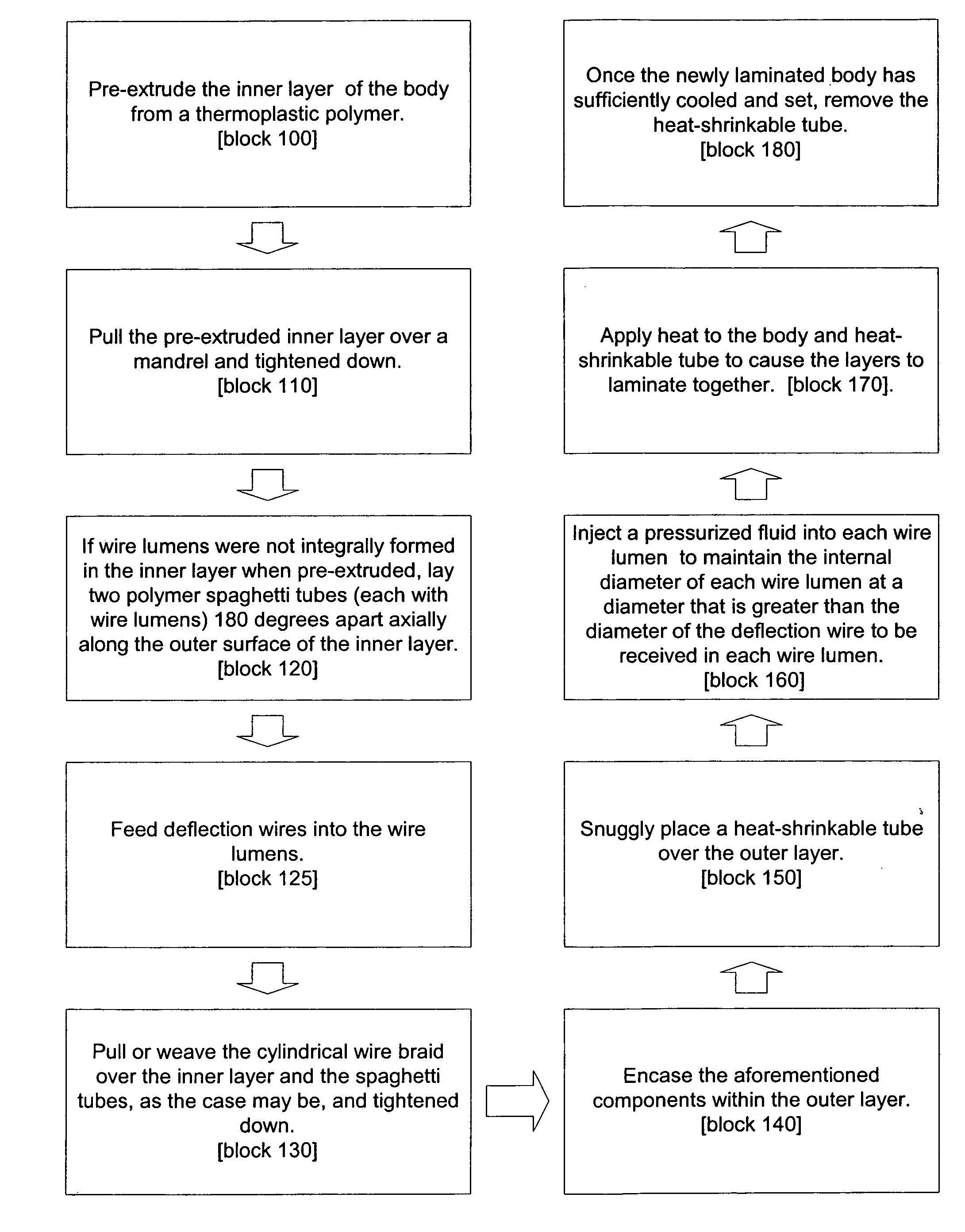Steerable catheter and methods of making the same
a catheter and sheath technology, applied in the field of flexible tubular bodies, can solve the problems of increasing the difficulty of operating the deflection wire, causing friction between the deflection wire and the actuation force, and braid embedded in the outer wall of the body
- Summary
- Abstract
- Description
- Claims
- Application Information
AI Technical Summary
Benefits of technology
Problems solved by technology
Method used
Image
Examples
Embodiment Construction
[0021] The present invention, in one embodiment, is a flexible tubular body for a steerable catheter, sheath or similar medical device that offers reduced deflection wire actuation friction and locking problems, but is less expensive and complicated to manufacture, as compared to prior art methods. During manufacturing of the flexible tubular body, oversized wire lumens are formed about deflection wires embedded in the wall of the body by injecting a pressurized fluid between the circumferential surfaces of the wire lumen and the deflection wire located therein.
[0022] For a discussion of a steerable catheter or sheath 10 employing the flexible tubular body 12 of the present invention, reference is now made to FIG. 1, which is a side view of the catheter or sheath 10. As shown in FIG. 1, the catheter or sheath 10 includes a generally tubular flexible body 12 and an actuation handle 14 coupled to a proximal end 16 of the body 12. A distal end 18 of the body 12 is adapted to deflect (...
PUM
| Property | Measurement | Unit |
|---|---|---|
| temperature | aaaaa | aaaaa |
| temperature | aaaaa | aaaaa |
| outer diameter | aaaaa | aaaaa |
Abstract
Description
Claims
Application Information
 Login to View More
Login to View More - R&D
- Intellectual Property
- Life Sciences
- Materials
- Tech Scout
- Unparalleled Data Quality
- Higher Quality Content
- 60% Fewer Hallucinations
Browse by: Latest US Patents, China's latest patents, Technical Efficacy Thesaurus, Application Domain, Technology Topic, Popular Technical Reports.
© 2025 PatSnap. All rights reserved.Legal|Privacy policy|Modern Slavery Act Transparency Statement|Sitemap|About US| Contact US: help@patsnap.com



